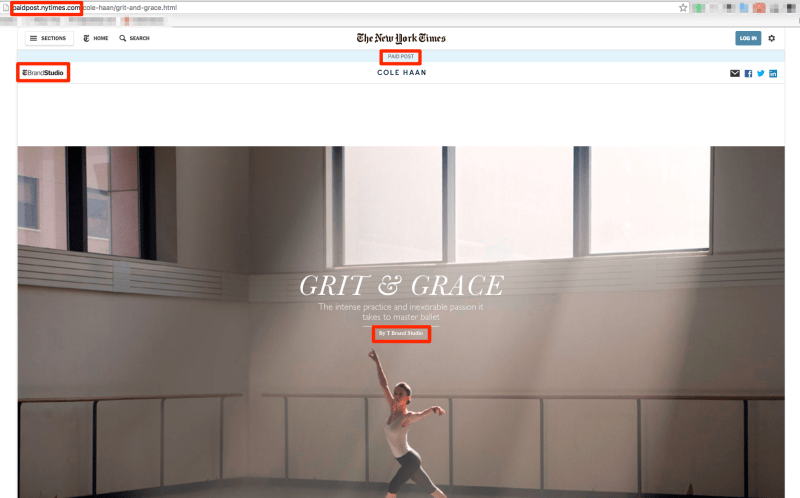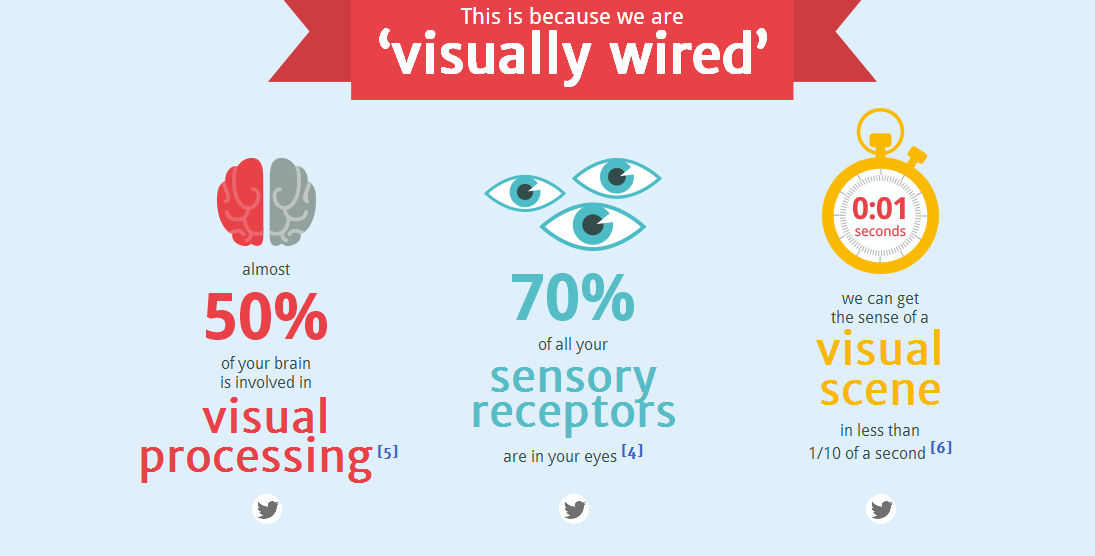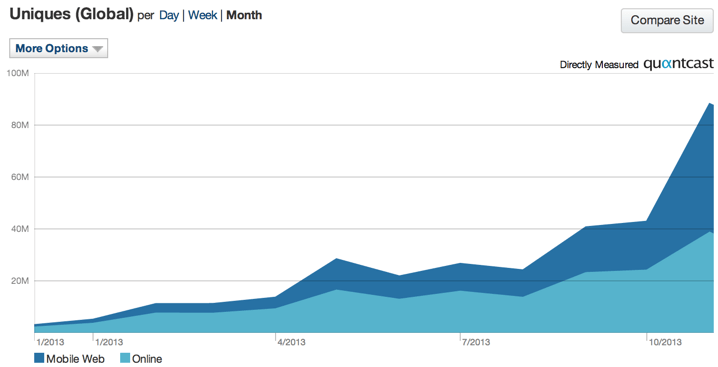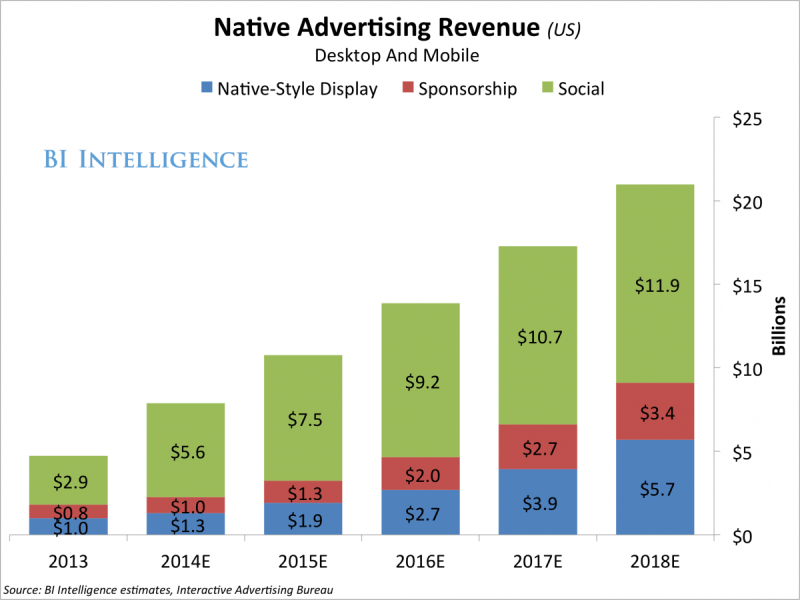Have you seen any native ads on your favorite website lately? Chances are that you’ve seen many but you just don’t know it. You see, that’s the beauty of native advertising.
In an earlier post on native advertising, we discussed in detail what native advertising means, its history, ethical concerns relating native ads, profitability of native ads, why they’re becoming so popular, most common ad formats, and some prominent examples.
In this post, we’re going to look at some of the adoption, technology, creative, and spending trends related to native advertising so that you can work on a more informed ad strategy in 2016.
1. Wider Adoption of Native Advertising
2015 was the year when large publishers such as New York Times and Condé Nast (among others) tested the waters by experimenting with native advertising, and following their modest successes, decided to set up dedicated in-house teams for creating native ad campaigns for their advertisers.

Outside of this, though, native advertising was still a relatively new concept — a lot of publishers didn’t know about it, those who did know were reluctant to implement it and preferred to stick with traditional channels of monetization such as display advertising.
2016 will be the year when native advertising comes of age and ceases to be just another buzzword by gaining wider adoption among small- and medium-sized publishers.
Most publishers have of late been struggling with declining ad revenues caused in part by the meteoric rise of ad blockers; this, when combined with the mushrooming of self-serve native ad tech startups, will create the perfect storm for the next wave of change in online advertising.
2. Content Recommendation Goes Mainstream
From Time to CNN to ESPN, content recommendations widgets are all over the internet these days — they work by utilizing user metadata to discover and recommend interesting content from across its network of publishers.
This arrangement works out well both for the publishers as they gain an extra channel of monetization and marketers as they get to amplify their message for a price.

For quite some time, Outbrain and Taboola have been the only dominant players in this space. Here’s some data on their reach from DIGIDAY:
Outbrain says it serves 180 billion recommendations and reaches 550 million people a month. Taboola, which serves 1.5 billion recommendations a day, says it has 400 million monthly unique visitors.
There’s a major difference in the way that Outbrain and Taboola work — the former monitors all the content that’s advertised on its network while the latter, instead of filtering content itself, allows users to vote up or vote down content, which works as a signal for which content gets to be displayed more often or which one gets weeded out. Both take pride in their methodology and think it’s superior than the other.
One concern that publishers have had about implementing content recommendation systems revolves around the overall quality of the recommendations — some believe that it damages the user experience on the website. Regardless, the numbers speak for themselves and one can safely say that content recommendations are here to stay.
However, now, other players are jumping into the fray too, Revcontent being a major one. They currently power 200 billion content recommendations a month on every continent and reach more users than Amazon and YouTube, according to comScore.
In the ongoing war for market share between Outbrain, Taboola, and Revcontent, the latter, which is the newest entrant, is catching up fast — just this year, Newsweek, International Business Times, Diply, Worldstar Hip Hop, The Christian Post, and more partnered exclusively with Revcontent.
Here’s what John Lemp, CEO and founder of Revcontent had to say about their growth and recent acquisition of ContentClick:
Our team has a strong passion and desire to provide a different kind of solution then what has existed on the market for the past 8 years, a solution that will put the control of the user experience back into all publishers and agencies hands. In acquiring ContentClick, the largest Independant Content Recommendation company in Europe, it brings us a huge step closer in that goal as they bring massive UK and European media relationships like Bauer Xcel, Archant, Ladbible, Unilad, and others as well as the top tier advertisers and agencies in Europe into our platform.
Further, after Yahoo got into the content recommendation space, even Google has decided that this is a market it can no longer afford to ignore. Here’s an update about the news from Marketing Land:
Google is getting into the content recommendation mix with a new tool for AdSense publishers. Matched Content gives publishers access to the familiar style of widget that appears at the bottom articles.Google’s version includes only internal links within a publisher’s site, for now at least. Keeping visitors on the site, of course, increases ad views and the potential for ad clicks. But it’s conceivable that Google might expand this functionality in the future to include paid links to external sites á la services such as OutBrain and Taboola or ads in the fashion of Yahoo Recommends, which includes links advertisers’ sites via native ads.Google’s entry in this realm is a bit late, but an easy implementation and the prospect of increasing page views and ad revenue may get many AdSense publishers already using a competing content recommendation engines — or the related posts widget in WordPress — to flip the switch on Matched Content in their accounts.
3. Go Mobile or Go Home
In 2014, a tectonic shift happened in the way we consume information online, for the first time in the history of computing, internet usage compiled by comScore revealed that more people were using mobile devices (smartphones and tablets) to connect to the internet than those using desktops.
And it makes sense because it’s only in the last 3-4 years when mobile devices have really come into their own: Capable of doing almost anything that one could do with a personal computer while being much more portable.
The important thing to note here is that this is an irreversible trend. Look at the graph below and you’ll realize that it’s unlikely that the desktop will now ever return to its original position as the King of media consumption devices.

In more supporting evidence of this, Google recently revealed that in as many as 10 countries including US and Japan, more Google searches take place on mobile devices than on computers. What’s interesting is that Google, unlike comScore, counts tablets as desktops and not mobile devices, which means that smartphones alone have now surpassed desktops and tablets combined.
What this means is that publishers and marketers need to have a distinct ad serving strategy for mobile devices, both for display and native ads.
Even within mobile, budgets need to be assigned separately for mobile internet and mobile apps to evaluate the performance of both channels for future decision-making.
4. Native Ads Meets Programmatic Buying
Native advertising has been around for some time now and so has programmatic ad buying, but so far, the two have existed more or less independent of each other.
Since many instances of native advertising currently tend to be bespoke creatives made by the publishers in consultation with their advertisers, scaling and automation for the long term becomes a challenge and a problem that must be solved.
Sponsored posts and other manually implemented forms of native ads are just one side of the coin, there are multiple other ad formats such as in-feed, in-ad, search, content recommendation, and promoted listings that lend themselves well to automation.
The great thing is that this shift from manual to programmatic is not just being spearheaded by up-and-coming ad tech startups that can afford to be innovative and agile, but even established players in the industry.
Google, for instance, recently announced that it will be bringing in programmatic support to native ads in mobile apps, which will later be extended to desktop and mobile web in early 2016. Here’s an excerpt on the announcement from Ad Exchanger:
If someone asked you to rattle off the big buzzwords in media, it’s a pretty good bet mobile, native ads and programmatic would be somewhere near the top of your list.Google has just knocked down all three in a single gesture, allowing its publisher customers to expose native ad inventory in their mobile apps to buyers on the DoubleClick Ad Exchange.The long-expected move is likely to bring a flood of new advertiser dollars to native ads, observers say, including from big brand advertisers that routinely scoop up IAB standard placements on exchanges, but whose “native programmatic” buys have been largely relegated to Facebook, Twitter and the small crop of ad tech vendors that have sprouted up in this space.
The emergence of new native ad formats, when coupled with the principles of programmatic buying and user targeting, will both bring a level of scalability that is currently missing in native advertising and ensure a higher levels of user engagement with ads, a win-win for both publishers and marketers.
5. On Harnessing the Power of Visuals
There are endless reports, statistics, and studies proving the effectiveness of visuals over text in content consumption.
In a post titled The Why And How of Creating ‘Snackable’ Content, the Visual Website Optimizer blog illustrates some facts about how our brain is hardwired to be better at processing visual information:

This is possibly the reason why new media companies such as BuzzFeed and Upworthy have witnessed growth at a rate that was previously unheard of — they both rely heavily on the visual medium, BuzzFeed on picture-led features and Upworthy on videos.
Here are some numbers on both from a post published on Growth Hacker:
Upworthy launched on March 26th, 2012, and just seven months later, they were getting almost 9 million monthly uniques visitors. In November of 2013, just 20 months later, Upworthy saw close to 88M unique visitors worldwide, with mobile visitors eclipsing desktop viewers for the first time.Those 88 million put Upworthy just behind online publishing powerhouse Gawker, according to a memo from Gawker Publisher Nick Denton, with its sights set on Buzzfeed with their 133 million monthly uniques.

Many large publishers have experimented with visually-led native advertising, some of the most successful ones have been cataloged by WordStream and Mashable. Here’s what all this means for publishers and marketers:
- Invest wisely. Simply throwing away money on native ads will not work. A decision has to be made to develop more visually appealing forms of ads.
- Focus on quality. All aspects of the creative need to be fine-tuned and optimized to have the maximum impact of the target audience. This includes concept, body copy, images, headlines, and calls-to-action.
- Collaborate. No matter how much technology advances, some things are better left to humans. Publishers and marketers need work together closely to create custom creative campaigns for consumers in addition to the usual marketing mix.
6. Increased Spending on Native Ads
As native advertising continues to evolve and gain wider acceptance in the online publishing ecosystem, ad spending on native ads is only expected to go up — at least if trends based on previous data are anything to go by.
Data released by BI Intelligence earlier this year shows a clear upward graph for native ad spends over the last few years:

Further, in its detailed breakdown of spend projections and growth rates for each of the three main native ad types — social-native, native-style display ads, and sponsored content, BI Intelligence predicts that the total spend on native ads will go up to $13.9 billion by 2017, $17.3 billion by 2017, and $21 billion by 2018.
Here are some other key takeaways from the report:
— Social native ads will account for the biggest share of native ad revenue during this time period, but native-style display ads will grow the fastest.— Social-native, including Facebook News Feed ads and promoted tweets on Twitter, will draw a majority of native ad revenue between 2013 and 2018.— Native display ads, like the splashy native ads on Yahoo’s news pages and apps, will see the fastest ramp-up.— Sponsored content, like some of the paid stories and sections on BuzzFeed and The New York Times (and Business Insider), has also attracted considerable attention.— Native ads perform better than traditional display. This is particularly true on mobile. Desktop native click-through rates (CTRs) averaged a respectable 0.15%, while native-mobile ads had CTRs over 1%, according to recent data from Polar Media Group and Celtra, respectively.— Consumers hold a generally positive attitude toward native advertising, according to survey data, but advertisers and publishers must ensure that ads are relevant and are purchased by trustworthy brands to avoid the risk of any mainstream backlash.
Summing Up
If done right, native advertising can be the perfect antidote to the widespread disillusionment and resentment users have against display advertising as evident by the popularity of ad blockers and many scathing pieces online speaking out against how intrusive, bloated, and tacky online advertising has become of late.
Native advertising also doesn’t suffer from many of the problems that display advertising does while offering many benefits that the latter doesn’t.
Just from a business perspective, this is one train you don’t want to miss. Whether you’re a publisher or an advertiser, you must have a native ad strategy going in 2016.
Source: http://www.adpushup.com/blog/6-future-trends-in-native-advertising-you-need-to-know-about/

FreedomPop is Britian's #1 ABSOLUTELY FREE mobile phone provider.
ReplyDeleteWith voice, text & data plans priced at £0.00/month.